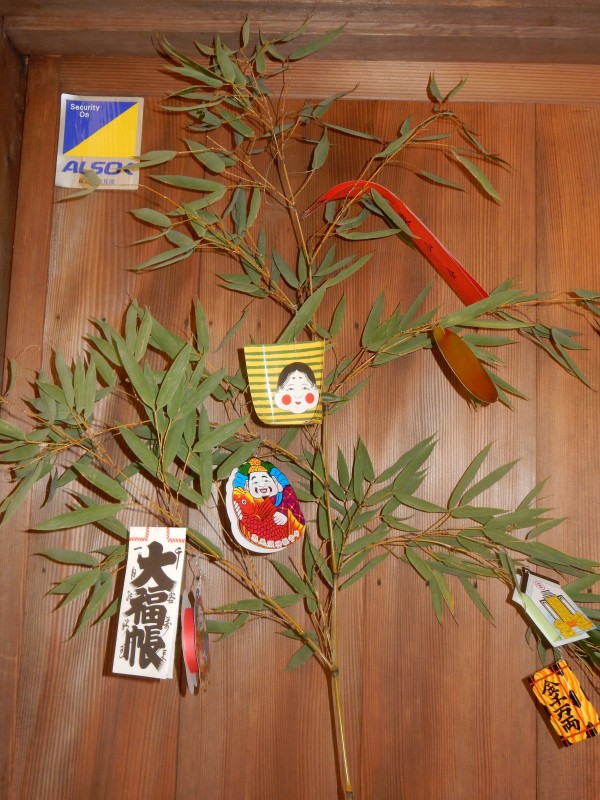
Complete set of Shichifukjin emblems
There are so many festivities around the New Year period, and Kyoto is an unceasing round of events in the early part of January. One of the biggest events is Toka Ebisu, on which Green Shinto has reported before. As the name suggests, it takes place on Jan 10 at the Ebisu Shrine and centres around the only one of the Seven Lucky Deities to be an indigenous Japanese. Participants come away with emblems of Ebisu and his merry crew aboard the Treasure Boat.
The very next day, Jan 11th, there’s a Seven Lucky Deities pilgrimage around the subtemples of the Shingon temple of Sennyu-ji. The idea is to collect an emblem from each of seven subtemples dedicated to one of the deities. It’s a clear indication of the syncretic appeal of the popular folk gods, which are often featured at Shinto shrines too. Sennyu-ji stands in the south-east of the city in wooded surrounds, making the route a pleasant walk through bamboo groves and the imperial cemetery of Tsukinowa where former emperors lie buried.
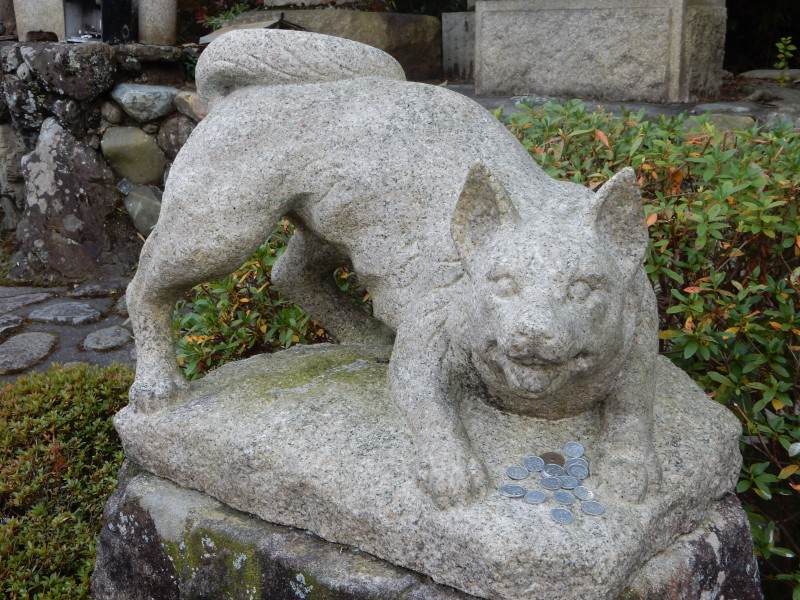
Dog guardian – or is it a wolf?
The course begins with being handed a branch with a red paper ribbon stating it’s for the Seven Lucky deities. The first of them is Fukurokuju, a deity of happiness, wealth and longevity who originated in China as a Taoist sage. He has an unusually long head, symbol of wisdom, and his emblem is a store house full of rice – a symbol of wealth and happiness enabling longevity. At the subtemple, Shokujo-in, I was surprised to see what looked like dog guardians – first time I’d come across that.
The second port of call is a subtemple housing a statue of Benzaiten, the only female deity among the Seven. She’s a muse of creativity, often associated with water.. Amongst the emblems laid out for sale was a scoop for happiness and the jolly face of Otafuku, whose plump cheeks denote a well-fed woman.
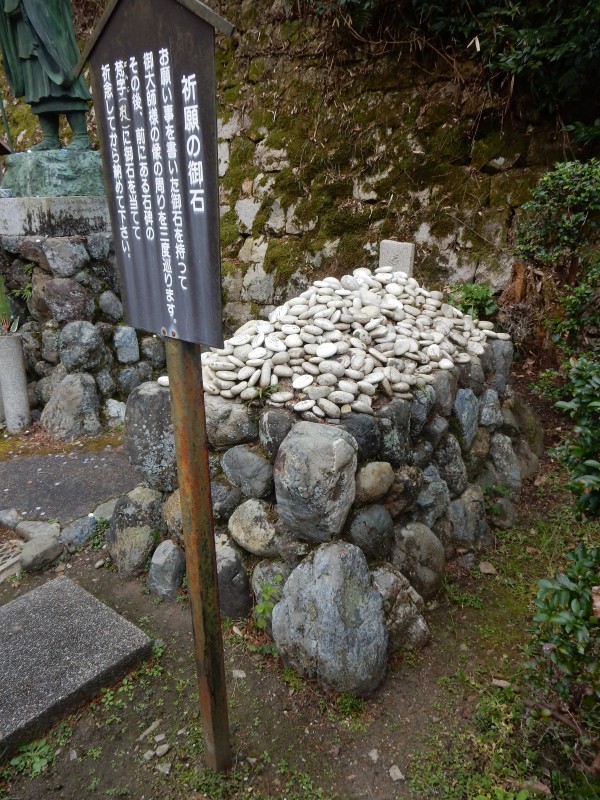
The pile of prayer stones at Raigo-in
The third subtemple on the trail is dedicated to Ebisu. His emblems picture him with a fish (tai), but what stuck me most at the temple was a curious statue of Kannon with what at first glance looked like children but were in fact an old man and woman. This was not the usual sort of Kannon, but bokefuju (prevent dementia) Kannon – bound to be popular with Japan’s increasingly aging population.
At the fourth subtemple, named Raigo-in, was a heap of discarded Hotei, Here the custom is to purchase a Hotei figurine, and after enjoying the benevolence of the pot-bellied deity for a year to return it for ceremonial disposal. One then purchases a bigger Hotei for the next year. Since bigger Hotei cost more than smaller versions, it’s a profitable venture for the temple.
The Hotei subtemple had a pile of prayer stones, which are sometimes seen at Shinto shrines. Here the custom is to write one’s name and prayer on the stone, then circle the pile three times before touching a magic rock to energise the stone before placing it on the pile.
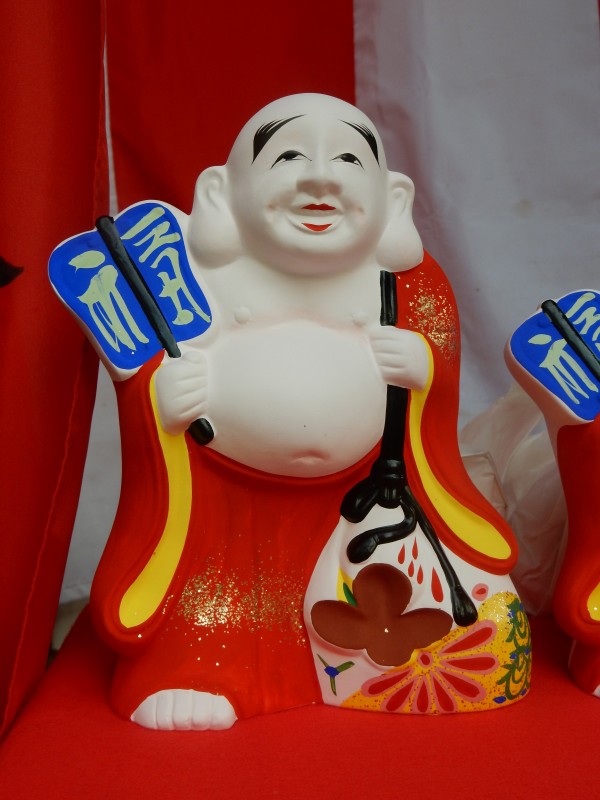
The Hotei figurine
The route leads then to Sennyu-ji’s main precinct, with its Buddha Hall and sacred water (Sennyu means Pure Spring) and past some imperial graves (there are 39 emperors buried here in all), before the next subtemple which venerates Daikokuten. Pictures show him with his happiness mallet standing on rice sheafs, a symbol of wealth and well-being.
At subtemple no. 6 the deity is Bishamonten, whose animal messenger is the tiger. Here the emblem was a ‘senmanryo’ piggy bank, into which gold coins could be placed to make up a small fortune. From the subtemple there was a splendid view over Kyoto and its northern reaches – appropriately since Bishamonten is guardian of the north.
The final subtemple, known as Honen-in, featured the deity of old age, Jurojin. Associated with Taoist immortals, he became a symbol of longevity and wisdom – much like Fukurokuju with whom the pilgrimage started. One thus comes full circle, as it were, ready to face the coming months with the confidence of knowing the Seven Lucky Deities are doing their best to bring you good fortune throughout the year.
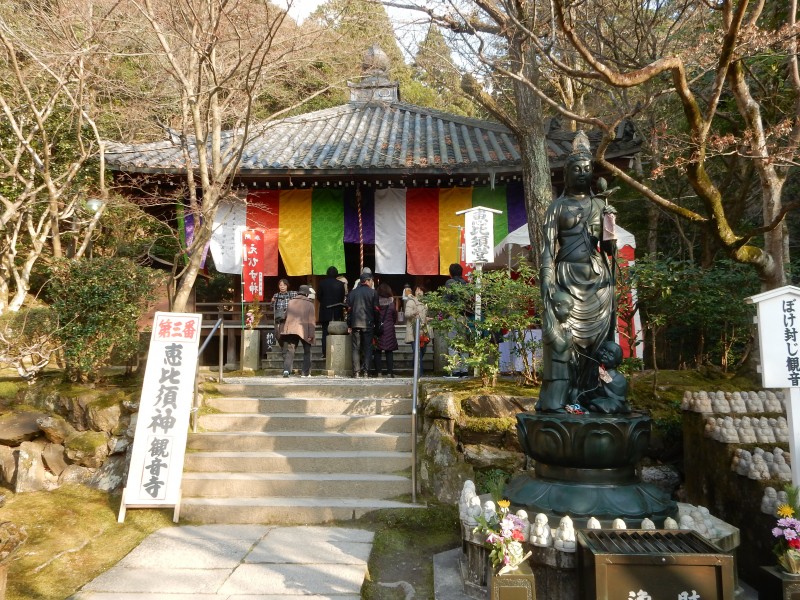
Ebisu Hall, in front of which is the Bokefujin Kannon to prevent dementia (look carefully and you’ll see the two figures are old people, not children, at Kannon’s feet)
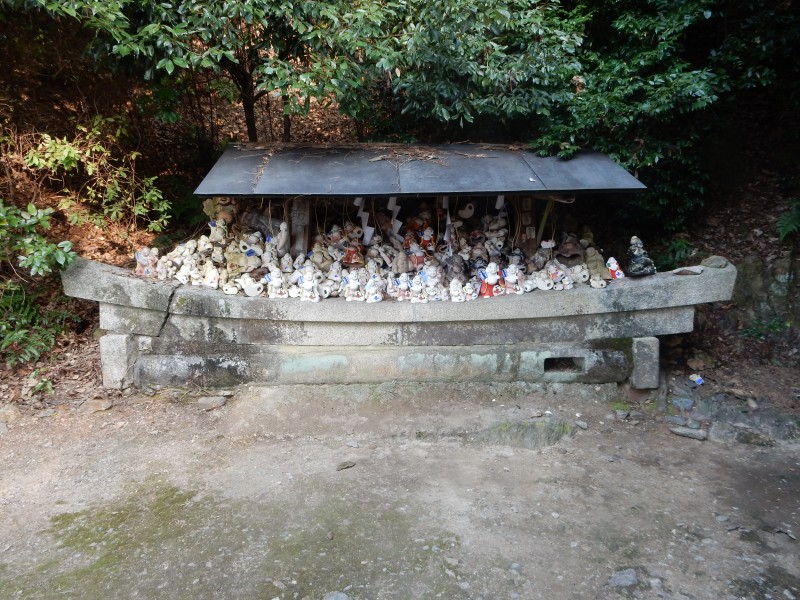
Disposal of old Hotei figurines, in a vessel shaped like a boat. The Seven Lucky Deities are often pictured in a Treasure Boat – here the boat is transporting the figurines to another world.
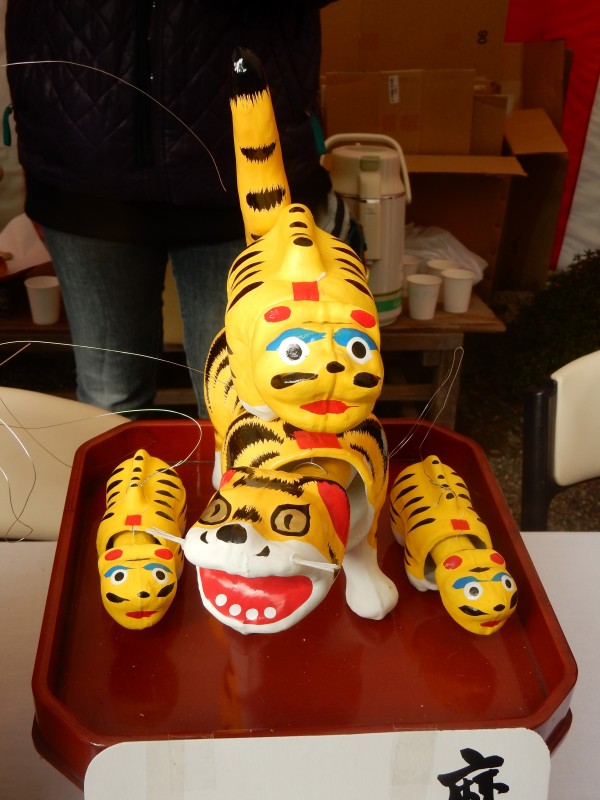
The tiger, Bishamonten’s messenger. Just one of a choice of emblems on sale.
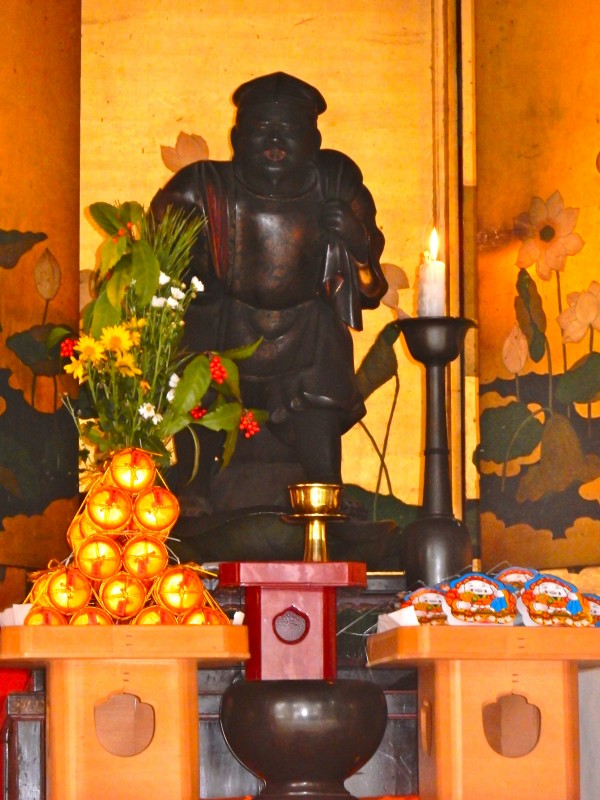
Each subtemple has a statue of one of the Seven Lucky Deities which is the object of worship. This one is Daikokuten.
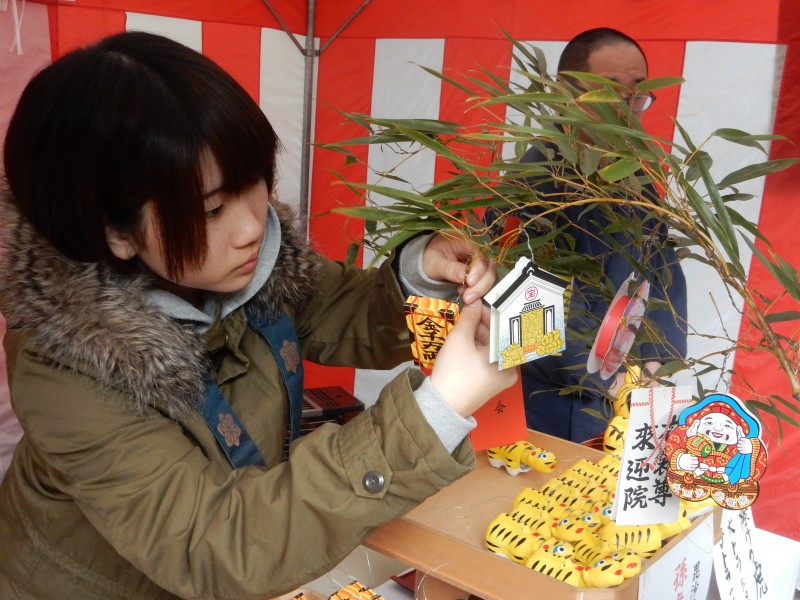
Tying on the Bishamonten emblem
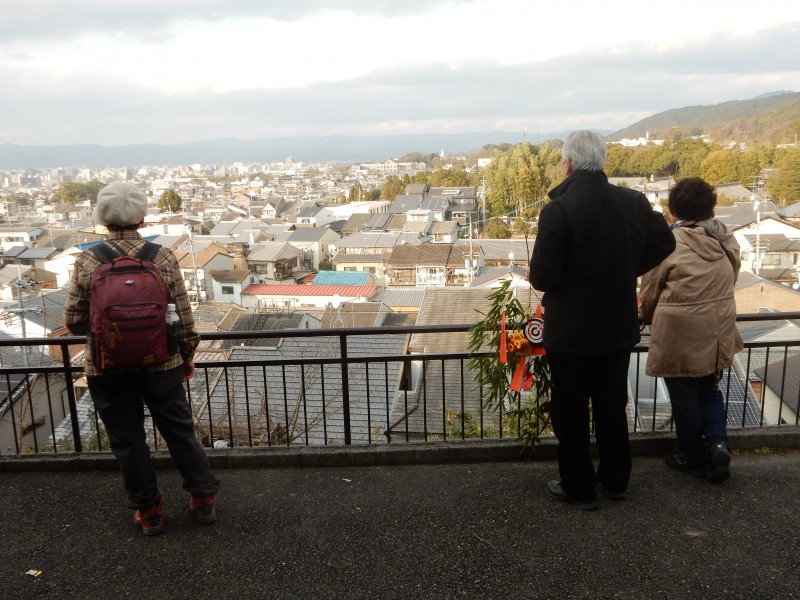
Time out from collecting emblems to enjoy the view over Kyoto
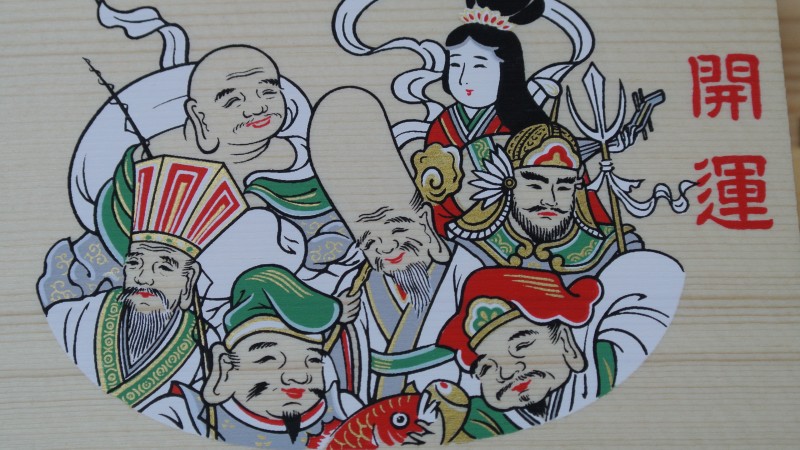
And here’s a picture of the whole ensemble… from left to right: Jurojin, Hotei, Ebisu, Fukurokuju, Daikokuten, Benzaiten, Bishamonten

Nice, I did this one last year